|
 by Burton Kelso, Integral Computer Consultants The summer months are probably some of the best months out of the year. I know I am constantly looking for ways to fill my free time with outdoor festivals, cookouts, days at the beach or the pool, day trips and full-blown vacations. I'm sure you're not aware that the summer months are also a dangerous time for your smart devices.
Our devices go everywhere with us and in all of our summer activities, there's an increased chance that something catastrophic will happen to our smartphone and laptops. I don't want to freak you out and make you stay indoors this summer, so I am sharing some tips to help your phone and other devices avoid the summertime blues. 1. Heat is the #1 Enemy of Your Devices. I hope by now you realize smartphones and tablets are basically mini computers. Like computers, parts such as the CPU and other crucial chips don’t work well when they get hot. When they do overheat, it can shorten the life of the device and even permanently ruin them. Computers and video game consoles have built-in fans to keep these devices cool, but smartphones don’t have fans. In most situations, if your devices become overheated, you will get a warning on the screen of the device. When you get a warning, turn your phone or tablet off immediately. Avoid using your devices in direct sunlight. If possible, use them only in shaded areas. Also, never leave your smartphone, laptop or tablet in a hot car ... unless you're looking for an excuse to have to purchase a new device. 2. Believe it or not, smartphones can’t swim. Yes, I know modern smartphones are water-resistant, but that doesn't mean water can't harm them. You probably always take care to make sure your devices don't fall in the toilet, take extra care when you're at the local watering hole, pool or ocean and make sure your devices stay dry. For extra protection, get yourself a Vanksy Floatable, waterproof case which will keep your smartphone dry, but will also stay afloat. 3. Yes, Someone Wants to Steal Your Phone. During the summer months, there is a 50% increase in stolen phones and other devices. What can you do to protect yourself? First, keep your phone and other devices near you. Avoid the temptation to leave your devices unattended. Next, modify your smartphone so your contact information on the lock screen. This way, if your phone is lost, a good Samaritan can get your phone back you. To do that, take a photo of a label with your contact information on it. Make sure to include your alternate phone number or email address. To get the information on your lock screen, on your smartphone, go to Settings > Wallpaper and Themes. Select your contact information image, then press Set as Wallpaper > Lock Screen. It's also an excellent idea to enable Apple's 'Find My iPhone' or Google's 'Find My Device' on your tablet or smartphone. Both of these devices, use GPS technology that will enable you to locate your lost device anywhere in the world. Finally, don’t assume the worst has happened to your devices. You'd be surprised to know many folks don’t call the last few locations where they accidentally lost or left their phones, thinking there’s little chance of getting them back. It's shocking how many lost and found places have drawers full of lost phones waiting for owners to reclaim them. 4. Prepare for the worst. So let's say the sun bakes your gadgets, your phone takes a swim or your devices disappear off the face of the Earth. You might have deep pockets so purchasing a new device isn't a big deal to you or you have a great device insurance plan. That doesn't get all of your pictures, music and documents back, right? Well, your best disaster plan should be a constant backup of your smart devices information. Both Apple and Android have solid cloud backup plans that will automatically back your devices up. If you aren't signed up with iCloud or Google Drive backup, you need to set that up immediately .... or are soon are you're doing reading this article. If you're like me, your life is on your smart devices. Understand the risks that are out there threatening your devices and make sure you're taking steps to protect them. At Integral, we're constantly getting calls from people like you who have had a smartphone or other device catastrophe. Enjoy your summer and take steps to make sure you can enjoy your devices in years to come. Burton Kelso is the Chief Technology Expert at Integral. Find him on Facebook, Twitter, Instagram, LinkedIn, and watch great tech tip videos on his YouTube channel. Contact Integral Computer Consultants at 888-256-0829 or www.integralcomputerconsultants.com. I have had some amazing professors over the years. One of my favorites is Dr. Gerald Stevens, Professor of New Testament and Greek, at New Orleans Baptist Theological Seminary. I didn’t know who he was when I enrolled for one of his classes.
A friend of mine was shocked that I signed up and said, “If I were you, I’d drop the class. He’s tough! I have successfully managed to avoid him for years!” I nervously laughed it off. About a week before the first day of class, I received a document from him that read, “Things to do before the first day of class.” There were three pages of pre-course work! I couldn’t believe the amount of work that was expected of me—before we even met on day one! I spent many hours in the library reading and studying. My friend was right about Dr. Stevens. He was tough. In fact, the toughest professor I have ever had. I worked twice as hard in his class as compared to others. But, at that same time, I grew immensely. He instilled in me a passion to learn and work hard. As a professor, he was painful, but profitable. As I think about some of my greatest growth, it has come through my deepest pain. Pain has truly been my greatest teacher. “Why don’t you take the lead?” my running partner said recently, as we began mile four of a five-mile trail run. It was extremely hot and humid, and my breathing was labored. My legs were tired and heavy and I was beginning to drag. I was out of gas. My guess is he could tell. He knew if we traded positions, and I set the pace, I would dig deep and regain some strength. He was right. Somehow, as I took the lead, I was able to dig deeper and work through the pain. I have a love/hate relationship with running. It’s inevitable, but every time I head out on a run, I say the same things, “Why am I doing this? This is no fun! Why don’t I just sit on the couch with a mocha latte and eat a Snickers ice cream bar?” As I press on, every fiber within my being says, “Just stop.” Yet, I listen to a greater voice and put one foot in front of the other. Deep within me, I believe that running is good for me physically, emotionally, and even spiritually. I heard someone say one time, “I run because I hate not running worse than I hate running.” I get it. What separates the good from the great runner is the ability to run through the pain and discomfort because of a greater goal. The old adage is true, “No pain. No gain.” Samuel Morse was an American painter and inventor but is best remembered for his creation of a device used to send electric signals over a wire. After creating the device, he then developed a coded system of dots and dashes that represented the alphabet. It was named Morse Code. The invention of Morse Code dramatically and instantaneously changed the world and opened up the possibility for long distance communication—something that was not possible before. But the new technology came at a price. As a painter, in 1825, Morse had been commissioned to paint a portrait of Lafayette in Washington DC. While there, a messenger on horseback delivered a letter from his father that read, “Your dear wife is convalescent.” The following day, he received another letter informing him that his wife had died. Morse immediately left for his New Haven home. Because of the great distance, and delay of the letters he had received, he was heartbroken to find that, upon his arrival, his deceased wife had already been buried. Rather than bury his sorrows, Morse decided to redirect his pain. He decided to explore long-distance communication. The process was long and laborious. But almost twenty years later, on May 24, 1844, Morse sent the infamous message, “What hath God wrought,” from the Supreme Court chamber in the basement of the U.S. Capitol building in Washington, D. C., to the B & O’s Mount Clare Station in Baltimore. His pain opened up great possibility and productivity. No one likes pain. Like a thief, pain interrupts our balance and robs us of wholeness and happiness. Most of us avoid pain whenever we can. Yet, we all know that some level of pain is inevitable. I have also come to the realization that pain can be invaluable. Pain awakens something deep inside of us. In his book, The Problem of Pain, C. S. Lewis said, “pain insists upon being attended to. God whispers to us in our pleasures, speaks in our conscience, but shouts in our pains: it is his megaphone to rouse a deaf world.” Some time ago, I had the privilege to baptize a man who chose to give his life to the Lord. He came to this decision through pain. Although he has fought valiantly, the aggressive, relentless cancer, and effects of the chemotherapy and radiation, were taking a huge toll on his body and his spirit. It was his pain that drove him to his knees. I met to pray with him one day. I said, “My prayer is that God would heal you and restore you to wholeness.” He responded sincerely, “I’m not afraid of death because I know I will be with the Lord. It’s just that,” he said tearing up, “I just love my family so much.” I admired his faith and his strength. Although I am not qualified to answer the question, “Why”, I reminded him that pain and sickness are the result of this fallen world in which we live where bad things often happen to good people. His response was profound. “Yeah, I know. But, if this cancer is what it took for me to come to know Christ as my Savior, it was worth it.” I left his home that day thinking, “He’s one of my heroes.” His pain is beyond my comprehension. Not all of us experience that level of pain. But, we all experience at least some level of pain—be it physical or emotional. In my own times of personal pain, I pray for God to supernaturally intervene and bring balance. I also pray that if there is a lesson to be learned, that my heart is open to learn the lesson quickly. I also try to look for reasons to rejoice and bring glory to God. To me, pain is the ongoing reminder that something in this world is terribly wrong. We’re stuck on this perpetual, painful rollercoaster. But, one day, the ride will stop. The great promise of God is that one day, all that is wrong will be made right. The book of Revelation records, “[God] will wipe away every tear from [our] eyes, and death shall be no more, neither shall there be mourning, nor crying, nor pain anymore…” (Rev 21:4). So, I guess the question of pain is not if it will visit, but what will we do with it when it arrives? Perhaps it might be beneficial to think of pain, not as a curse, but as an opportunity for introspection on the road to a greater destination. Wayne Geiger is the Pastor of First Baptist Grain Valley, an Adjunct Associate Professor of Speech, and freelance writer. He can be reached at waynegeiger.com. by Jamie Miller Multiple Sclerosis (MS) has a rather disagreeable way of intruding upon peoples’ lives. It can come on quickly and unexpectedly, and, through osmosis, makes itself rather comfortable wreaking havoc on your central nervous system. Or, it can be quite sneaky, playing tricks for years before you know it is there.
Either way- or both- for those who live with MS, the nature of the disease is a stark reality. MS can cause a myriad of cognitive, emotional, physical, and social impairments, leaving those who are affected at its mercy. The good news is that MS treatments are progressing, and promising disease-modifying-treatments are on the rise. Even better, there are doctors around the world searching for a cure! Curious about MS? It might take quite a bit of research to satisfy your curiosity about MS. The National Multiple Sclerosis Society (NMSS) provides a wealth of information on all aspects of MS; it is worth a few minutes of your time to satisfy your thirst for knowledge, or a few hours of your time if MS is a part of your life. MS is an extremely complicated, demyelinating, autoimmune disease that attacks the central nervous system. The onset of the disease is generally during young- relatively speaking- adulthood. NMSS states that “most people with MS are diagnosed between the ages of 20 and 50, although MS can occur in young children and older adults”. In other words, it is not picky. MS is relatively rare, although according to the NMSS, recent studies revealed that nearly 1 million people in the United States live with MS - more than twice the number previously thought, and more people are receiving diagnosis sooner than ever before. Our Story A lifetime ago, or rather March 2019, my husband received a diagnosis of Multiple Sclerosis. It all started one fairly benign, winter morning- a Saturday in February to be exact. My husband- 32 years old, ripe for the MS picking- walked into the room and proceeded to explain that he just experienced what sounded like a stroke: his left arm seized into his body, he had no movement in his left leg, his muscles on the left side of his mouth were contorted, and he couldn’t breathe. Within a short period of time, the episode passed, and he was left plagued with repeated involuntary muscle movements in his left arm. Needless to say, after a long trip to the emergency room, a lot of wait time, several MRIs, and an amazing neurologist our MS journey began. I am still amazed at how suddenly and impactfully such a disease can change lives. One minute your husband is chasing the kids around the house, the next minute he is starting a disease-modifying treatment. Like many others, after learning about MS we were able to trace the disease back for years, but that first clinical flareup left its mark, and we found ourselves launched into a lifelong battle against MS. We are very fortunate to have received the care that we did, and you would never know that my husband is suffering from a silent- at least at this point- disease. MS can be progressive and comes in all shapes and sizes, but regardless of its form, the painful, neurological impact is real. As my husband’s disease evolves, so will his story. Your Story MS may not play a role in your story, but do not underestimate the role that you can play in MS’s story. The MS community is one of the most welcoming and supportive communities out there, in particular, the NMSS. If you or someone you know has MS, or you if you are looking to be involved with an amazing community of people, reach out to NMSS and get involved. I recently completed a service project with the NMSS Mid America Chapter in Kansas City and it was a great experience; they are always looking for support. Bike MS: Kansas City is coming to the area in September, click here to check out volunteer opportunities, or click here to put together a team. Or, you can always reach out to an NMSS Volunteer Coordinator; click here to reach out to Wes, our Kansas City Volunteer Coordinator. NMSS is the biggest advocate for those with MS, and they open their arms to anyone who wants to join in the mission to create a world free of MS. If your story needs a little more action and adventure with a few more characters, be an MS champion. I am. by Marcia Napier, Grain Valley Historical Society Built in 1925 at a cost of $75,000, Grain Valley’s second brick school housed both the high school and elementary grades until 1954. At that time, it became the Junior and Senior High. That continued to be the case until 1969 when patrons approved a $260,000 bond to complete Phase I of a new high school directly behind and west of the 1925 building. Phase II was completed in 1974 when patrons said “yes” to a $150,000 bond. Students remained in that building until 1994, when the high school moved to Eagles Parkway. If you’ve been reading this column you know the senior high was moved to this location upon completion of Phase III. The traditional classrooms in Phases I & II were used for the middle school until specialized classrooms could be added for Home Economics, Industrial Arts, Fine Arts and a gymnasium. Since moving to the Sni-A-Bar location there have been three major additions in 2003, 2013, and the current construction. These additions have added the auditorium, the Allen Lefko Business Center and the current Fine Arts wing for art, vocal and instrumental music and a new library/media center. The original $75,000 building housed 88 high school students in 1933 (plus the elementary grades). When I graduated in 1964 there were 143 students in the high school and an additional 70-75 junior high students. We had 17 teachers and administrators. Because the floor tiles arrived too late to complete the special design for the first-grade classroom, my second-grade class was the first to move into the elementary school in 1954. We were also the last class to use the gymnasium in the 1925 building. I have plenty of memories in that old gymnasium from junior and senior plays, music concerts, basketball games, pep rallies, and assemblies to proms and graduation ceremonies. It was where the Michigan State fight song got new words written by Diane Harmon (Class of ‘63) was first played as the GVHS Fight Song in 1962. It was also the community center for all kinds of events like carnivals and community theater. Every class raised money throughout high school. Some was spent each year to build our Homecoming float, but most of it was spent during our junior year to decorate for prom and pay for the dinner served in the school cafeteria. Before Grain Valley had a cafeteria, the junior class mothers prepared the meal, mostly in their homes and partly in the Home Economics room. It was served in the school library on the second floor! As seniors, we continued to raise funds for our senior trip. The morning after prom, the seniors would load into a school bus (with no air conditioning) for a week-long trip to the Ozarks. My class went to Scott Valley Dude Ranch in Mountain Home, Arkansas. Today, over 1350 students attend GVHS in a building and sport facilities that are approaching $23,500,000. What was true for the citizens of Grain Valley in 1906 still holds true today. And so, as I conclude this series, I will end with the final statement from the first article for the Valley News on April 4, 2019. “While the Grain Valley School District is growing and changing rapidly in the new millennium, what hasn’t changed is the commitment to make education a priority for the children of our community.” 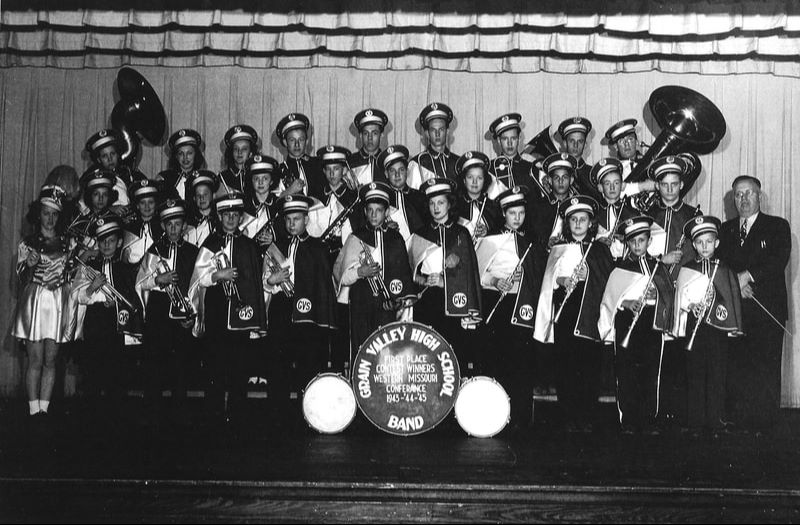 Pictured above: First basketball team in 1913. Games were played at the Royal Playhouse at the corner of Walnut and Main Street. Pictured below: Grain Valley High School 1945 band with band director Mr. Phil Turner of Turner Music Co. in Independence. Photo credit: Grain Valley Historical Society by John Unrein The week of July 22nd marked the opening of Grain Valley Varsity Football Camp. There’s strength in numbers and it’s a big man’s game are two football clichés that are often heard. They may both be true for the Eagles as they get closer to their season opener with the Grandview Bulldogs on Friday, August 30th. Head Football Coach David Allie is happy to see the 93 student athletes who are participating in camp this week along with some of the noticeable size up front on both sides of the football for the Eagles. “Definitely bigger up front. Defensively last year we finished the season that big up front. Offensively, our size is good up front as well heading into the season.” One of the new faces up front for the Eagles offensive line is Coleson Manade. The junior is competing to start at the center position. Mastering the art of the shotgun snap isn’t easy in the spread offense. Neither is communicating pass protection or run blocking schemes prior to the snap. All of this takes place prior to blocking an angry defensive tackle in front of you as the down unfolds. Manade seems to take all of this in stride. “I think that I am taking steps forward with my footwork at the center position. We need to continue to improve our communication in checking on the guy next to us to make sure our understanding is solid so that all five of us (the offensive line) are on the same page. Watching film has been a good teaching tool in our growth as a unit.” Not lost on Manade is that camp can be a grind. However, his perspective of things shows his positive outlook. “The weather is supposed to be beautiful this week and we get to go through this together as a team. I enjoy the challenge that we have to know all five positions along the offensive line,” Manade said. Keeping teenagers engaged is a unique task during camp in that time must be taken to teach specific things to a high level of understanding while balancing physical activity to avoid lulls in concentration. Installation of special teams is one way that Coach Allie and his staff keep this equilibrium. “We are doing the base installation of our special teams. We spend 25-30 minutes a day on that phase of the game. That’s a huge thing. This week is the last time we will see the kids for twelve days outside of weights next week. We are also reviewing our base offensive and defensive schemes while tweaking things that need to be addressed so that hopefully we have a good foundation in place for the start of things on August 12th,” Allie said. Developing a roster to compete in the suburban conference is a year round task. Time only devoted to your 22 starters stunts the growth of your future. A week of varsity camp also allows for instruction to occur for underclassman so that their development is fostered. “It’s through this camp until the jamboree that we have to spend time improving numbers 6 through 30 on our roster. Not just focusing on the top 5 kids you have on each side of the football. Doing this helps your competition and depth on your team. We also want to make sure that everyone knows what they’re doing to improve the confidence of the young men in our program,” Allie said. Eagles July Varsity Football Camp will conclude with a scrimmage against the Indians of Fort Osage High School on Friday, July 26th.
Grain Valley High School football camp was held the week of July 22nd. 93 student athletes participated in the varsity camp. Photo credit: Valley News staff
by Marcia Napier, Grain Valley Historical Society Built in 1925 at a cost of $75,000, Grain Valley’s second brick school housed both the high school and elementary grades until 1954. At that time, it became the Junior and Senior High. That continued to be the case until 1969 when patrons approved a $260,000 bond to complete Phase I of a new high school directly behind and west of the 1925 building. Phase II was completed in 1974 when patrons said “yes” to a $150,000 bond. Students remained in that building until 1994, when the high school moved to Eagles Parkway. If you’ve been reading this column you know the senior high was moved to this location upon completion of Phase III. The traditional classrooms in Phases I & II were used for the middle school until specialized classrooms could be added for Home Economics, Industrial Arts, Fine Arts and a gymnasium. Since moving to the Sni-A-Bar location there have been three major additions in 2003, 2013, and the current construction. These additions have added the auditorium, the Allen Lefko Business Center and the current Fine Arts wing for art, vocal and instrumental music and a new library/media center. The original $75,000 building housed 88 high school students in 1933 (plus the elementary grades). When I graduated in 1964 there were 143 students in the high school and an additional 70-75 junior high students. We had 17 teachers and administrators. Because the floor tiles arrived too late to complete the special design for the first-grade classroom, my second-grade class was the first to move into the elementary school in 1954. We were also the last class to use the gymnasium in the 1925 building. I have plenty of memories in that old gymnasium from junior and senior plays, music concerts, basketball games, pep rallies, and assemblies to proms and graduation ceremonies. It was where the Michigan State fight song got new words written by Diane Harmon (Class of ‘63) was first played as the GVHS Fight Song in 1962. It was also the community center for all kinds of events like carnivals and community theater. Every class raised money throughout high school. Some was spent each year to build our Homecoming float, but most of it was spent during our junior year to decorate for prom and pay for the dinner served in the school cafeteria. Before Grain Valley had a cafeteria, the junior class mothers prepared the meal, mostly in their homes and partly in the Home Economics room. It was served in the school library on the second floor! As seniors, we continued to raise funds for our senior trip. The morning after prom, the seniors would load into a school bus (with no air conditioning) for a week-long trip to the Ozarks. My class went to Scott Valley Dude Ranch in Mountain Home, Arkansas. Today, over 1350 students attend GVHS in a building and sport facilities that are approaching $23,500,000. What was true for the citizens of Grain Valley in 1906 still holds true today. And so, as I conclude this series, I will end with the final statement from the first article for the Valley News on April 4, 2019. “While the Grain Valley School District is growing and changing rapidly in the new millennium, what hasn’t changed is the commitment to make education a priority for the children of our community.” 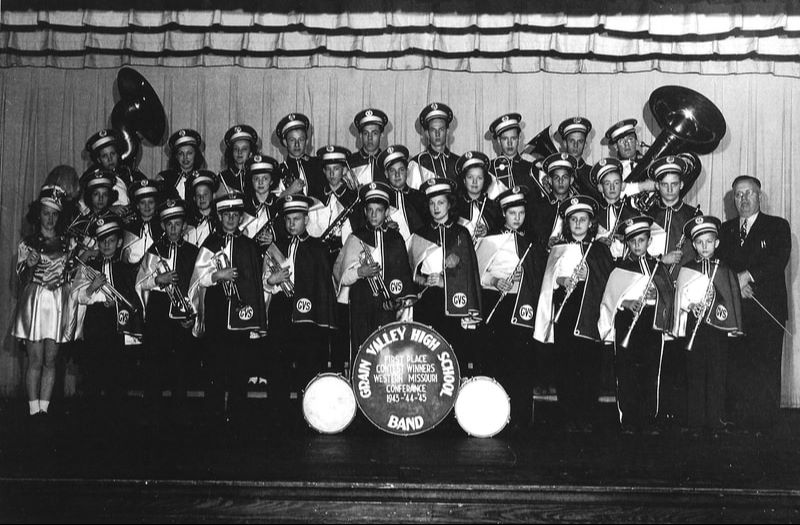 Pictured above: First basketball team in 1913. Games were played at the Royal Playhouse at the corner of Walnut and Main Street. Pictured below: Grain Valley High School 1945 band with band director Mr. Phil Turner of Turner Music Co. in Independence. Photo credit: Grain Valley Historical Society The Grain Valley Police Department held Camp Focus, July 15th – 19th. The objective of the camp was to provide the youth of Grain Valley with an opportunity to creative positive interactions between law enforcement and the youth through education and mentoring. Attendees of Camp Focus completed intense training including lectures regarding internet safety, behavior science, drug & alcohol prevention, mental health information and life skills techniques. They took part in role play situations, peer panels, and demonstrations. They also spent the afternoon at Watkins Mill State Park, fishing and engaged in other activities with volunteers from Grain Valley’s VIPS – Volunteers in Police Service and Grain Valley Police officers. GVPD Chief James Beale visits with a camper during an outing at Watkins Mill State Park. Photo credit: City of Grain Valley
The State of Missouri approved Missouri Amendment 2 on November 6th, 2018 by a 65.59% (yes) to 34.41% (no) margin. Missouri Amendment 2 was formally titled the Medical Marijuana and Veteran Healthcare Services Initiative. Ballotpedia cites that passage of this amendment legalized marijuana for medical purposes, would tax marijuana sales at four percent, and spend tax revenue on healthcare services for veterans.
The Missouri Department of Health and Human Services established a timeline based on the passage of Amendment 2 to begin accepting applications for qualifying patients within 180 days after December 6, 2018. Amendment 2 requires the department to begin accepting applications for dispensaries no later than 240 days after December 6, 2018. The department may accept or reject applications for dispensaries within 150 days of receiving them. Ordinance B19-20 was approved for a second reading by a 5-0 vote by the Grain Valley Board of Aldermen during their meeting on Monday, July 22nd. The purpose of the ordinance would be to update Grain Valley’s Municipal Code to reflect legalizing medical marijuana in Missouri by Constitutional Amendment. Both Community Development Director Mark Trosen and City Attorney Joe Lauber informed the Board of Alderman of recommendations on regulations for the proposed ordinance in Grain Valley. Alderman Totton expressed personal concerns about what medical marijuana coming to Grain Valley might mean. “With the amendment that passed last fall, now if someone holds a qualifying patient card for medical marijuana, they would have a constitutional right to possess, to ingest, to have administered to them medical marijuana. Additionally, if a facility permit has been issued to a company or individual through the State’s process, then an individual holding a permit for a facility would have a constitutional right to locate that facility. The general ordinance will need to touch criminal and zoning ordinances so that the city has some control over how this will be utilized. It would be highly advisable that the Board would pass regulations. Otherwise, people may do what they want where they want,” Lauber said. Trosen advised the board about some of the content found in the proposed ordinance up for review. “In regard to what is in front of you today, this is the provision of the State Constitutional Amendment which would then be put into a new title within the cities code of ordinances that would then regulate medical marijuana within the city limits. Most of the language that is in the proposed bill is from the State Constitution.” “As we talk about definitions and licensing there are a couple of sections that I want to bring to your attention. The first one pertains to the citing of the facilities as they exist and would be a distance from existing elementary and secondary schools, daycare, or church. The clause in here (the ordinance) pertains there would be a distance of 750 feet from those establishments,” Trosen said. “That would be measured from the external wall of the proposed facility to the closest proximity of the property line of a school, daycare or church as measured as the shortest distance between those points that may be lawfully traveled by foot.” The State of Missouri has set the maximum distance between a dispensary and qualifying places such as schools as 1,000 feet. Trosen advised the Board along with Lauber that the recommended reason for the distance of 750 feet is that it would be the maximum distance possible for a dispensary to be away from qualifying places without prohibiting their ability to exist within the city. Mayor Todd also commented that the number of dispensaries allowed in Missouri may be organized by congressional districts and that may limit the likelihood of one within Grain Valley. Other language of the proposed ordinance brought to light for understanding included hours of operation for a potential dispensary. Facilities would not be allowed to be open to the public or make sales from the hours of 8:00pm to 8:00am. Zoning and traffic code also must be ironed out and proposed to the planning and zoning commission. The City of Grain Valley is much like other communities and municipalities in Missouri, who are currently reading, discussing, questioning, and deciding what ordinances should exist to best balance serving the general interest of their residents along with abiding by Amendment 2. In other business, Sapp Design Architects and Helix Architects + Design updated the Board on the timeline progress of the Sni-A-Bar Farms property for future city use as a municipal complex. The next scheduled Board of Aldermen meeting will be held at City Hall on August 12th, 2019 at 7:00pm. The Grain Valley branch of the Mid-Continent Public Library (MCPL) is offering a series of free events in August for job seekers and those seeking to start or build a business.
Tools for Job Seekers: Resumes and Online Applications Tuesday, August 13, 2019 10:30am—Noon Acquire the basic tools needed when applying for jobs online. This class will include resume assistance and tips for filling out online job applications. Daycare Resources Open House Wednesday, August 14, 2019 6:30pm—8:00pm Looking for ways to grow your business? The Library has free resources to help you. Whether it is adding value to your childcare services or bringing more excitement and enjoyment to your families, the library has the tools you need. During the open house, attendees can advantage of resources that MCPL has to offer such as taking a personalized a tour of the Library, exploring library resources to help small businesses grow, learning about keys to kindergarten readiness, checking out the new early literacy kits, and enjoying an opportunity to network with other local child-care providers. This project was made possible in part by the Institute of Museum and Library Services. For more information, please contact Scott Rader at [email protected] or 816.521.7228. Tools for Job Seekers: Online Presence Tuesday, August 20, 2019 10:30am—11:30am This class will include tips for creating a professional social media presence or cleaning up your existing online profiles to help you put your best foot forward in today’s tough job market. Tuesday, August 27, 2019 10:30am—11:30am Are you interested in learning how to make connections with peers in your profession and stay up to date with the latest business trends? Come learn about LinkedIn and how you can get started. Registration is required for all events. To register, visit www.mymcpl.org/events.  by Wayne Geiger As an adult, I have always been a student at heart and loved to learn. My high school days were a different story and perhaps the subject of a future article. But, as an adult, I love to do research and expand my horizons. At times, I tend to be a skeptic and a frequent visitor of Snopes.com. Perhaps, that’s why I can identify with Nathanael.
In the Gospel of John, a guy named Philip tells Nathanael that he has found the Messiah—Jesus of Nazareth. Nathanael’s response is classic, and he says, “Can anything good come out of Nazareth?” Philip says in response, “come and see” (See John 1:45-46). Maybe Nathanael knew that Jesus was to come from Bethlehem and not Nazareth. From Nathanael’s perspective, Nazareth was a little hole in the wall town with not more than a couple hundred people who lived there. What’s worse, Nazareth was a city of revolt. Several times in history the Roman army came to Nazareth to execute judgment—on one occasion crucifying 2000 Jews—many of whom in Nazareth and surrounding areas. The thought of Jesus coming out of Nazareth was beyond his comprehension and way outside of his box. Philip didn’t try to argue, he simply invited Nathanael to see for himself. Some years ago, my family and I had just moved to South Louisiana. We were super excited to be moving into a new home and city—and all the new experiences that went along with it. One of the first things I needed to do was some lawn maintenance. The grass needed to be cut, the bushes needed to be trimmed, and there were vines growing all over the place. It looked really messy. It was a full day of work with the lawnmower, weed eater, rake, and other lawn equipment. When I finished, it looked great! The next morning, I noticed a bumpy rash on my arm that was a little itchy. No big deal. As the day went on, it itched occasionally, but it wasn’t too bad. That night, however, the need to scratch woke me up out of a sound sleep and I found myself itching feverishly, not only a small spot on my arm, but my entire arm—and now my other arm! I figured I had contracted some type of an allergic reaction to something that I had eaten or drank. I got up and took some Benadryl and put calamine lotion on my arms and tried, somewhat unsuccessfully, to go back to sleep. The next day, I kept calamine lotion on and it wasn’t too itchy. I figured whatever it was would work its way out of my system. Again, that night as I tried to sleep, I tossed, turned, and itched all night—not only my arms, but I realized the blistering rash had now spread to my legs. I applied more lotion. I looked like a leper and was extremely miserable. The next day, I connected with a friend and showed them my arm. Thankfully, they identified my problem: “Oh, you’ve got poison ivy!” Whatever you do, do not scratch. If you scratch it, you’ll break the blisters and it will spread!” Too late I thought. Growing up in Miami, and not spending much time in the woods, I had never seen or experienced poison ivy before. But my guess was that’s exactly what the vine was that was growing up all over the back yard that I had ripped down and placed in garbage bags. Apparently, the ivy was not willing to go quietly and had inflicted one final revenge. “How long will it last?” I asked. “I could last a week, or so,” was his reply. I counted the days and realized I was about halfway to a week by now. “I’ll just ride it out” I thought. I was now blistered on my arms, legs, and torso and was scratching like crazy. “Dummy me,” I thought, “I’ve been itching and have spread the stuff all over my body.” Now, I wondered how long this would last and was it possible that I would perpetually scratch, break the blisters, and cause the blisters to spread (rinse, repeat)! My first thought was just wrapping myself up in ace bandages, but I feared looking like a mummy or a victim of an unfortunate accident. My wife took great pity and went to the store and found every type of itch relief and poison ivy cream and remedy that they offered. They helped a little. But, as much as I tried not to scratch, I just couldn’t help it—especially at night. I would wake up scratching like a wild animal. I neglected to take my wife’s advice and go to the doctor and decided to go online and read up on poison ivy. Turns out, my research was extremely helpful. The truth is, poison ivy does not spread from scratching. The problem with poison ivy is the oil that the plant produces. When the oil gets onto your skin it causes an allergic reaction for many people. The problem is not the blisters, but the oil. The oil is bad stuff and can spread by simple contact. For example, if you have the oil on one arm and touch the other arm it could spread and get into your system. Or, worse, if you have it on your shoe from the day before, you could get it—or even if your dog goes outside and gets into it and you pet the dog! Thankfully, there are preventative measures that you can take to prevent the oils from getting onto you. In addition, a simple shower can wash off the oils (depending on the timing, it might have still gotten into your skin, but at least it won’t spread). However, scratching it and breaking the blisters do not cause the poison ivy to spread. Looking back, when I asked a friend what I had—he knew it was poison ivy. However, he didn’t know much more than that. His knowledge was based upon information that had been handed down to him. He wasn’t trying to be deceitful but was just passing on information that he believed to be true and helpful. It wasn’t. It turns out, research into the truth was the key. Philip simply invited Nathanael to come and see—to check it out for himself and do his own research. That was great advice. An interesting twist to Nathanael’s story is that, unbeknownst to many, Jesus was not born in Nazareth, but simply grew up there. He was born, as was prophesied in the Old Testament, in Bethlehem and was, indeed the promised Messiah. It turns out some of the information Nathanael had was a little jaded and a little research was all that was needed. Philip’s invitation led to Nathanael’s personal investigation and eventual transformation. Wayne Geiger is the Pastor of First Baptist Grain Valley, an Adjunct Associate Professor of Speech, and freelance writer. He can be reached at waynegeiger.com. |
Categories
All
Archives
July 2024
|
Grain Valley NewsGrain Valley News is a free community news source published weekly online. |
Contact Us |



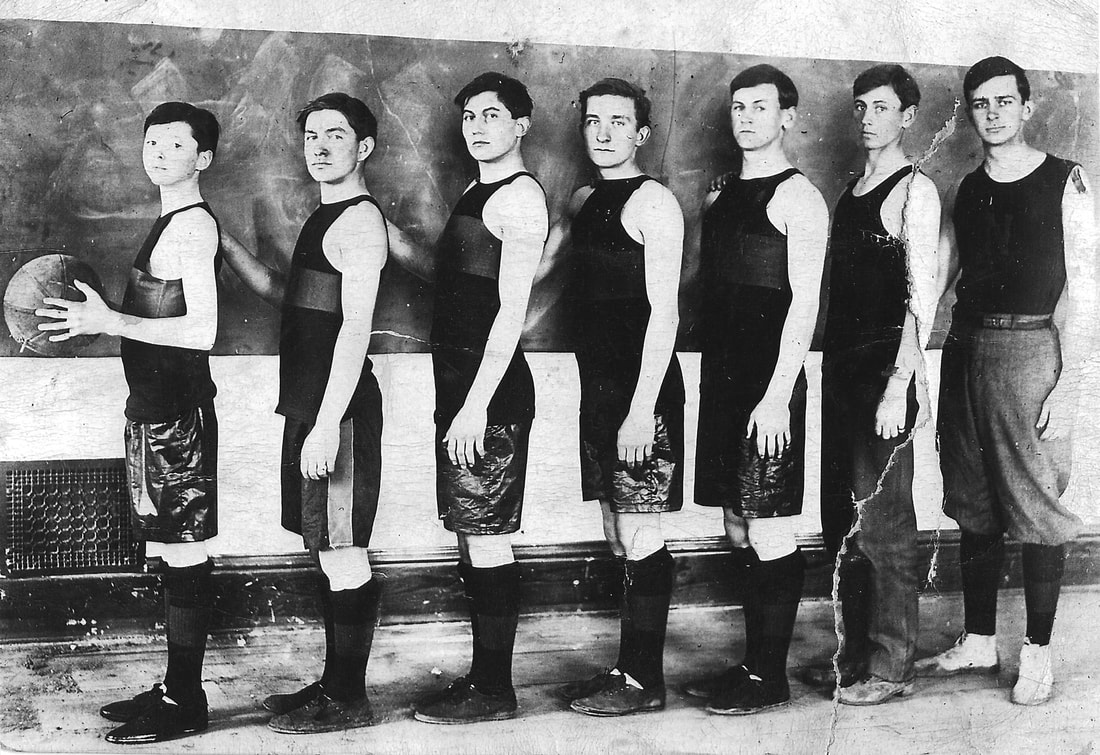
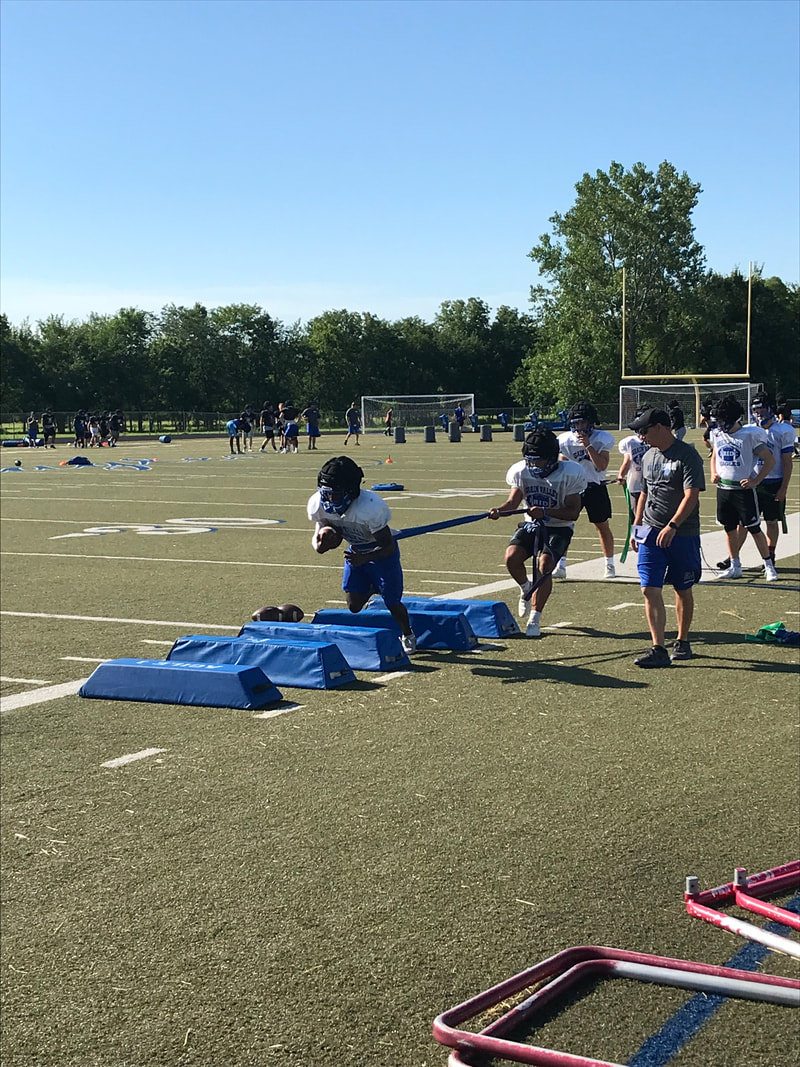
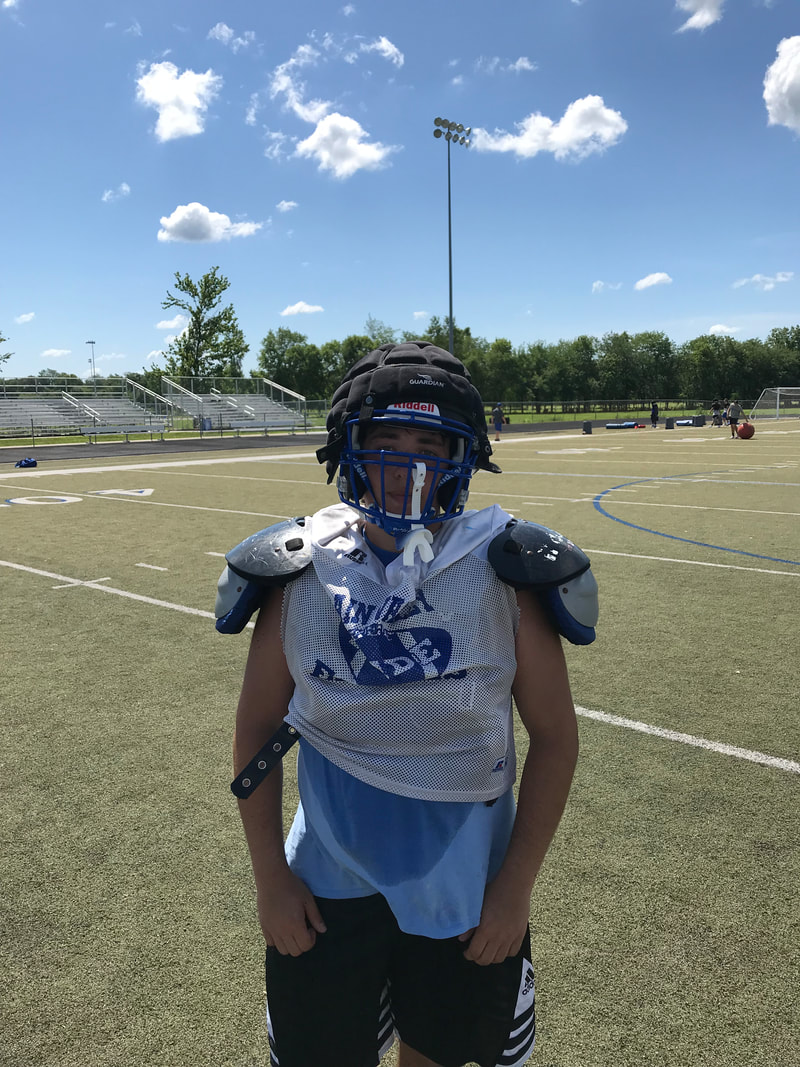
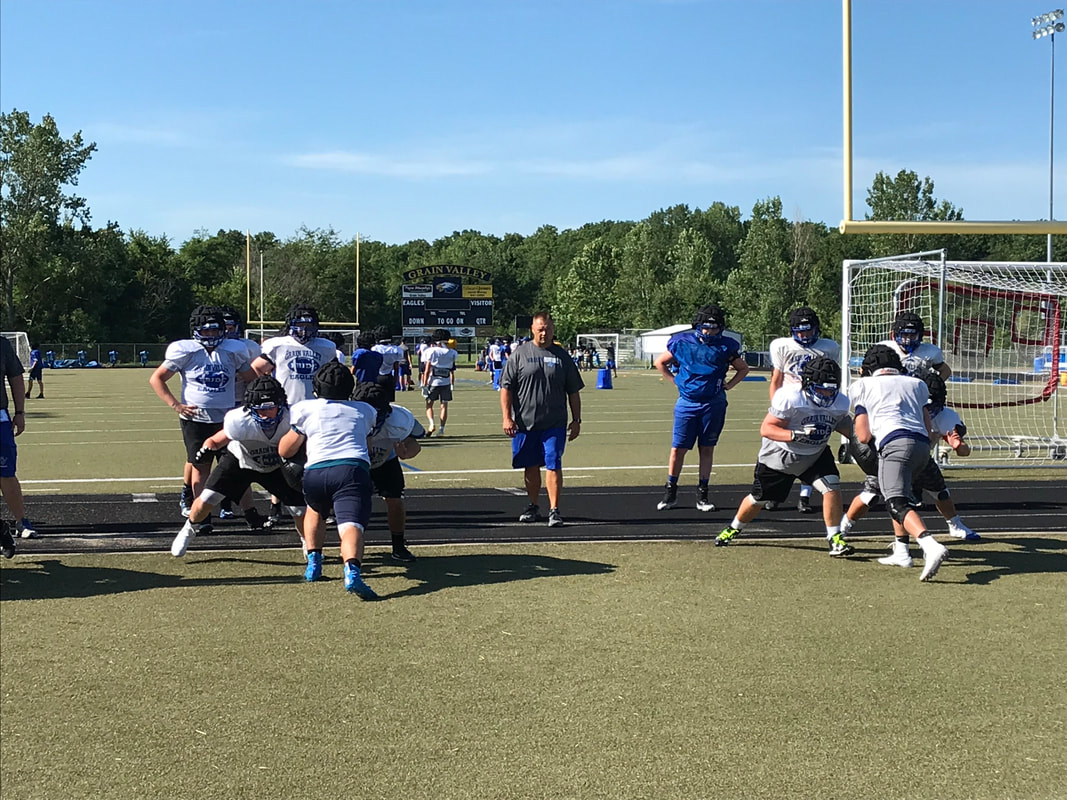
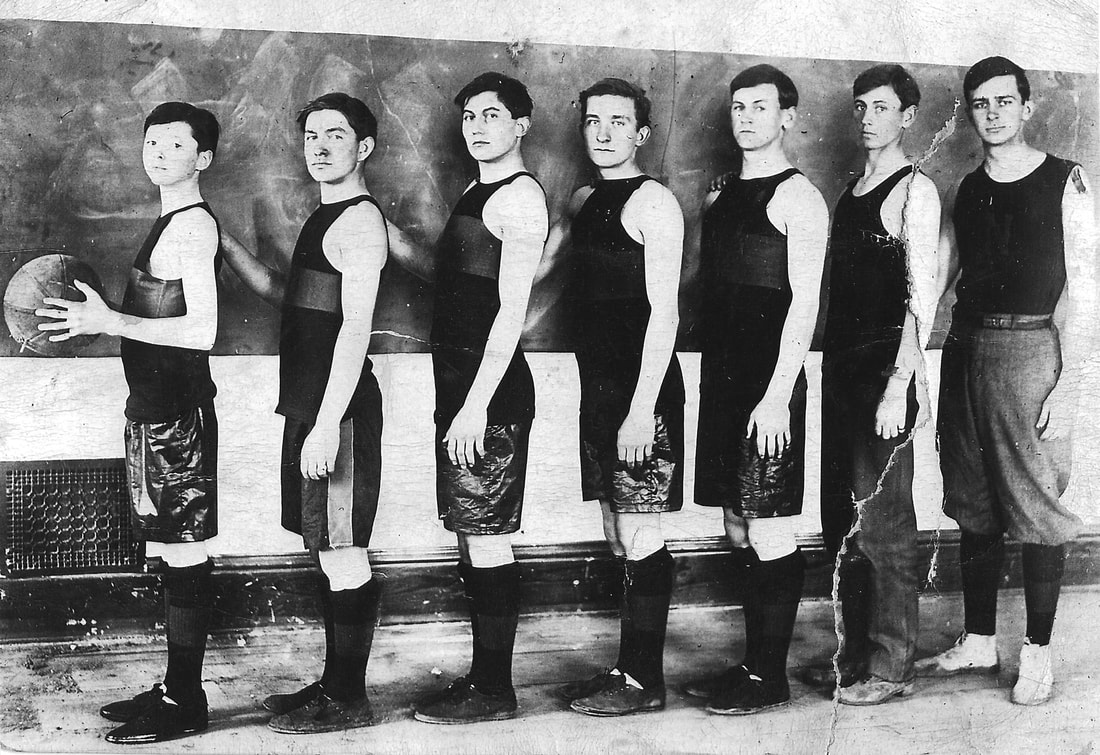
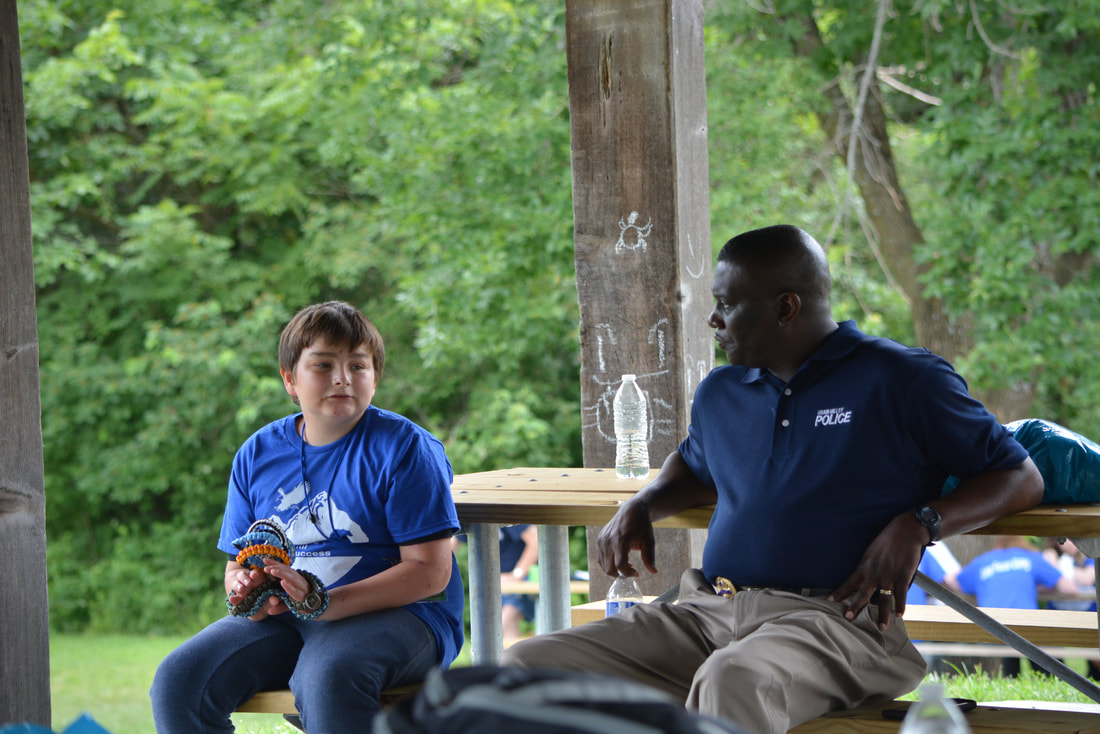

 RSS Feed
RSS Feed
